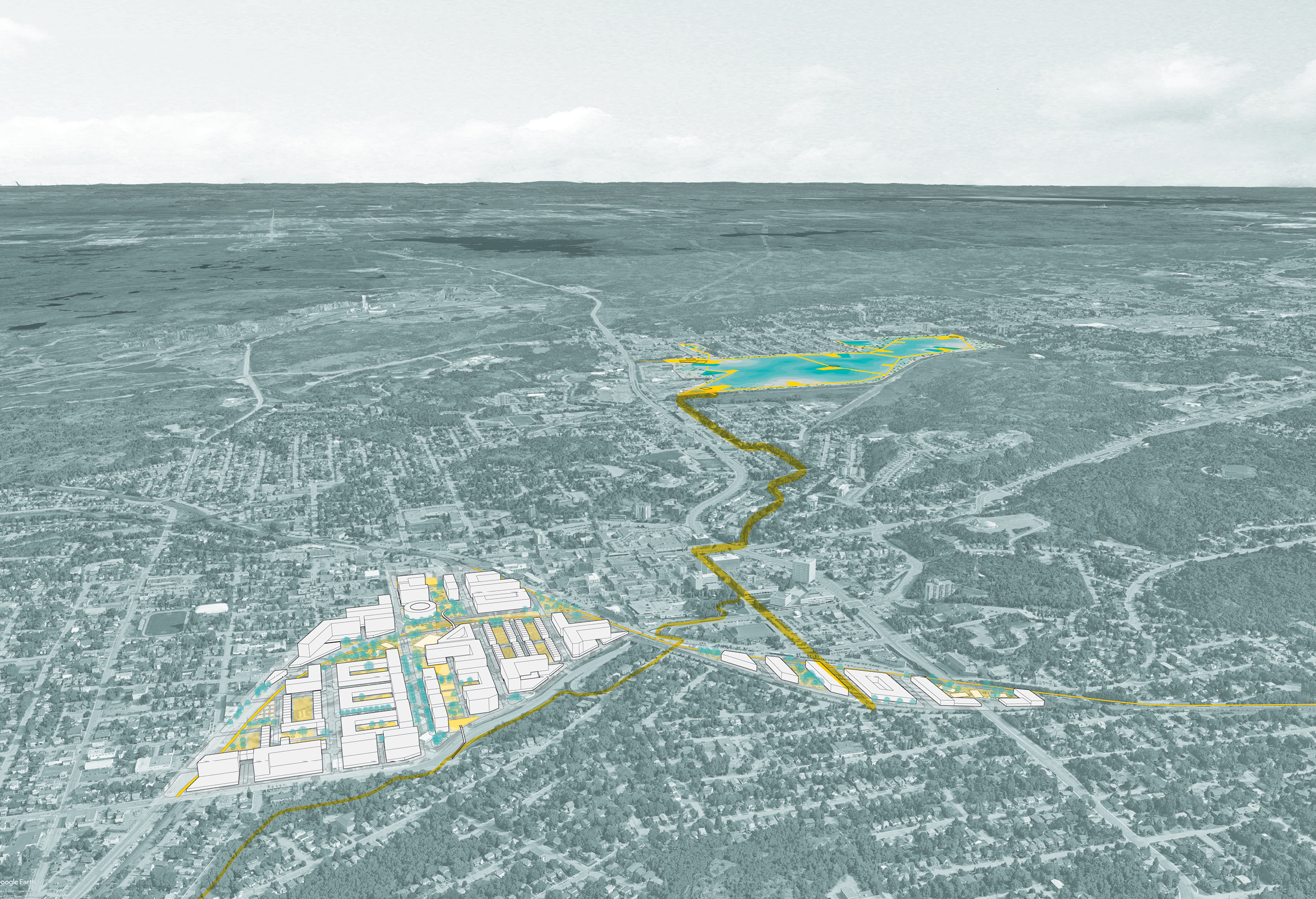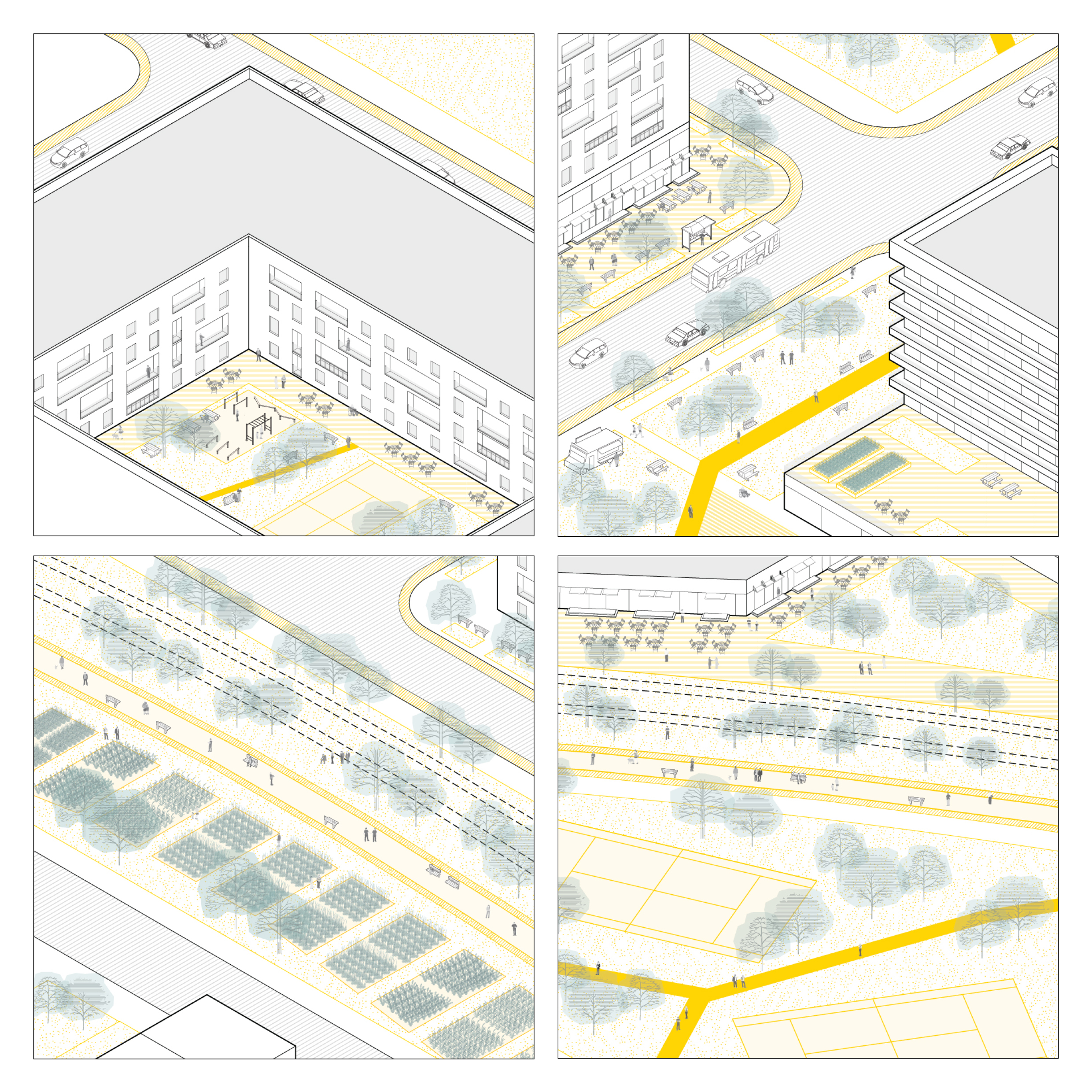Urban Reciprocities
Strategies for rethinking two spatial byproducts of Sudbury’s 20th century urban development
Sudbury, Ontario | 2020
Design Team: Ali Fard, Chenjie Xiong, Tian Wang

The proposal aims to activate and integrate two sites representative of the Sudbury’s previous urban trends as landscapes of potential for the future growth of the city. The massive rail lands immediately to the south and west of the downtown represent an immense developmental potential. As icons of the industrial development of the city, these lands are not as heavily used as they once were. Currently they amount to impenetrable valleys that physically and psychologically cut the core of the city off from its Southern parts. In addition, the tract of land to the north of the New Sudbury Conservation Area, between the rail tracks and Lasalle Blvd is one of the lowest points in the city and currently in danger of overdevelopment. Straddling Junction creek as it meanders its way through the city, this area is currently thriving with renewed life in its wet ecology. We believe this site is more valuable to the city as a working wetland that if it were to be developed with single family housing.






